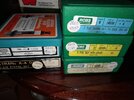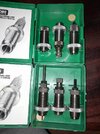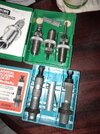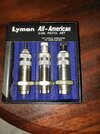Hillbilly Hydrographics
Member
Sorry in advance for any ignorance I might show or dumb questions that might follow. I've mentioned before that me and a close friend have been saving and starting our research and want to go in on a basic reloading set up. Not looking at pumping out thousands of rounds or nailing down the perfect rifle round. Mainly just want to have the capability and tools and supplies so when there is another long term shortage or so forth we will be able to insure we have a few rounds available. I also plan on adding equipment as I go for some of my older antiquated and more oddball calibers that is hard to find at times. My dad brought me a surprise gift today from a close family friend who has been goin through his late brother's stuff. I received a box with several die sets and other small pieces like deburring tools and shell holders. I'll post some pics so you experienced reloaders can tell me a little more about what exactly I have. I know the calibers but not exactly 100 percent sure of what specifically each set is for. Like the 38 special set says swc which I know means semi wadcutter but does that mean it will only load semi wad cutter projectiles? The 45acp set says shotshell? Is that like the cci bird shot rounds you can buy? Thanks for any and all info. And again thanks for being patient with a reloading newb. My family friend said as he continues to go through stuff there will be some more reloading gear headed my way.
 here's pics of dies in box they look lnib. First the 38 and 45acp
here's pics of dies in box they look lnib. First the 38 and 45acp
 9mm and Weatherby 300
9mm and Weatherby 300
 and Lyman 41 s&w
and Lyman 41 s&w

 here's pics of dies in box they look lnib. First the 38 and 45acp
here's pics of dies in box they look lnib. First the 38 and 45acp
 9mm and Weatherby 300
9mm and Weatherby 300
 and Lyman 41 s&w
and Lyman 41 s&w


